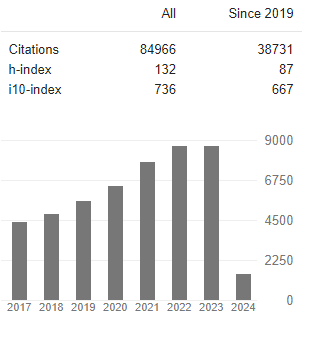Traffic Signal Prediction Based on Anfis and Metaheuristic Algorithms Applied to a Vissim-Based Simulated Intersection
Abstract
Amir Shahkar, Seref Oruc and Aref Yelghi
Traffic signs are among the most important traffic equipment that are used in urban and non-urban areas and their purpose is to increase road volume and reduce delays while ensuring safe movement. Over the years, due to the growing trend of car production and car use, which has increased urban and road traffic, traffic signs have increased and become more diverse and efficient. One of these traffic control methods at intersections is the use of traffic signal scheduling techniques, which despite the advantages of this method has a major drawback, and that is that due to the dynamic behavior of traffic, this method has issues in predicting traffic signal timing especially in times of peak traffic. Designing appropriate green times for traffic signal lights with Adaptive Neuro-Fuzzy Inference System (ANFIS) technique in traffic signal controller is a feasible solution to tackle this issue in urban network congestion during peak hours. The capability to learn from experience is one of the specifications of ANFIS that makes these techniques appropriate to mention genuine universe challenges. ANFIS Traffic Signal Controller is used to control the traffic density of an intersection so that it can reduce the queue length and latency to the minimum optimal time expected. ANFIS Traffic Controller is an intelligent controller with automatic learning sets the appropriate green time for each phase of the traffic light at the beginning of the phase, and the system generally depends on traffic information. The controller uses metaheuristic algorithms to tune ANFIS parameters during learning time. The first part of this article concerns the simulation of an isolated intersection in a VISSIM simulator, for the generation of the new phase distribution of it (optimum cycle). In the second part, ANFIS with metaheuristic algorithms is modelized and applied to the VISSIM simulated intersection. In the modelized system, for training and testing phases, 90 samples of newly generated data sets from VISSIM, and 40 others were considered respectively. By tuning the parameters using metaheuristic algorithms, we tried to increase the accuracy of the ANFIS network prediction to demonstrate the high performance of the ANFIS network in predicting and controlling traffic in intersections. The predicting system uses real-time data to predict the signal time. Results of the analysis demonstrated that our predictor system with ANFIS-GA indicates better predicts in comparison to ANFIS-PSO and ANFIS-HS. The predictor system presented a total and Relative Mean Square Error of 2.9619 and 8.4215 in the train set and 4.2209 and 11.8501 in the test respectively. The designed prediction model in the field of complex data showed an acceptable level of reliability and flexibility.




